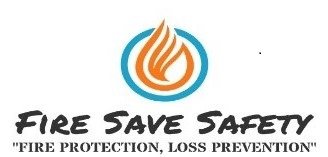Understanding Fire Accidents: Causes and Prevention
Fire accidents can occur unexpectedly, often leading to devastating consequences. Understanding the common causes of fire accidents is crucial in preventing them. Electrical faults are a significant contributor to fire outbreaks, often resulting from outdated wiring, overloaded circuits, or faulty appliances. Unattended cooking, another leading cause, can quickly escalate into a fire if a stove or oven is left unattended, especially when cooking with oils or fats.
The careless handling of flammable materials, such as gasoline, paint thinners, and propane, can also lead to fire accidents. These materials require proper storage and handling to mitigate fire risks. Additionally, natural causes like lightning strikes can ignite fires, particularly in dry, wooded areas. Being aware of these potential hazards is the first step toward prevention.
Educating people about fire hazards in their homes, workplaces, and public spaces is essential. Awareness campaigns and fire safety training can significantly reduce the incidence of fire accidents. Practical tips for minimizing fire risks include regular maintenance of electrical appliances to ensure they are in good working condition and safe cooking practices, such as never leaving cooking food unattended and keeping flammable items away from heat sources.
Proper storage of flammable materials is another critical preventive measure. These materials should be kept in well-ventilated areas, away from sources of ignition. Installing smoke detectors and fire alarms can provide early warnings of a fire, allowing for prompt action to be taken. Regularly testing these devices and replacing their batteries can ensure they function correctly when needed.
In summary, a comprehensive approach to fire prevention involves understanding the causes of fire accidents, raising awareness about potential hazards, and implementing practical safety measures. By taking these proactive steps, individuals and communities can significantly reduce the risk of fire accidents and enhance overall safety.
Safety Measures and Fire Extinguishers: Saving Lives and Property
Ensuring safety during a fire emergency necessitates a well-structured and practiced plan. One of the pivotal steps in safeguarding lives and property is developing a detailed emergency exit plan. This plan should clearly outline all escape routes, ensuring they are accessible and unobstructed at all times. It is essential for every member of a household or workplace to be familiar with these routes. Regularly conducting fire drills is vital as it prepares everyone to respond swiftly and calmly in the event of an actual fire. These drills should simulate real scenarios to enhance preparedness and identify any potential issues in the evacuation process.
Another critical aspect of fire safety is the availability and proper use of fire extinguishers. There are several types of fire extinguishers, each designed to tackle specific classes of fires. For instance, water-based extinguishers are effective against ordinary combustibles like wood and paper, while foam extinguishers are versatile for both Class A and B fires involving flammable liquids. Carbon dioxide extinguishers are ideal for electrical fires, and dry powder extinguishers can handle a variety of fire types, including flammable gases. Understanding the specific use of each type is crucial for effective fire management.
Operating a fire extinguisher efficiently can significantly reduce damage and prevent the spread of fire. The PASS technique—Pull the pin, Aim at the base of the fire, Squeeze the handle, and Sweep side to side—is a standard method for using most extinguishers. However, regular training and refresher courses are recommended to ensure that everyone can utilize these devices confidently and correctly.
Maintaining fire extinguishers in optimal condition is equally important. Routine inspections and maintenance checks should be conducted to verify that the extinguishers are fully charged and functional. Many companies offer marketing, sales, and services related to fire extinguishers, including professional inspections and certification. Engaging with these services ensures that the extinguishers are reliable when needed. Moreover, periodic training sessions should be arranged to keep everyone informed about the latest fire safety practices and equipment usage.
Equipping oneself with the knowledge and tools to handle fire emergencies effectively can vastly reduce the risk of injury and property loss. By implementing these safety measures and ensuring the proper use and maintenance of fire extinguishers, we can create a safer environment for everyone.
